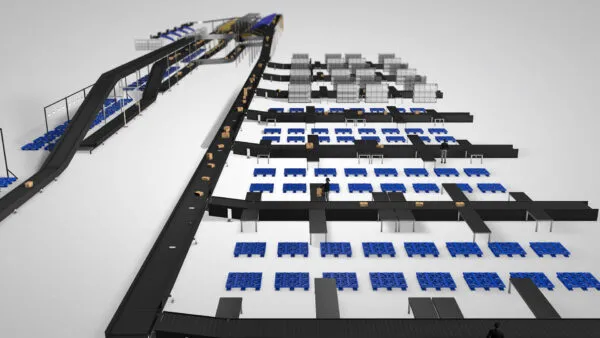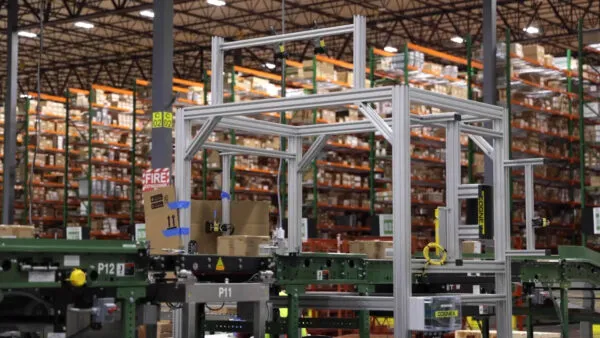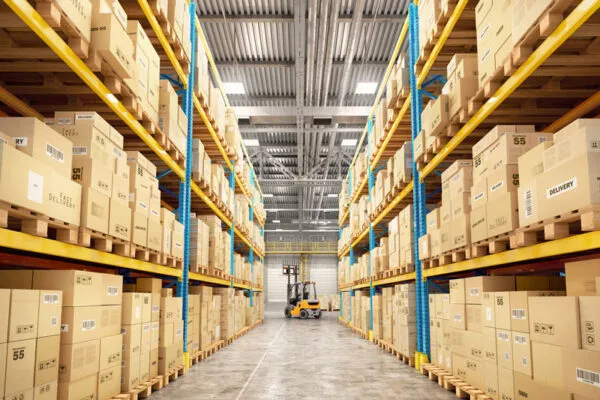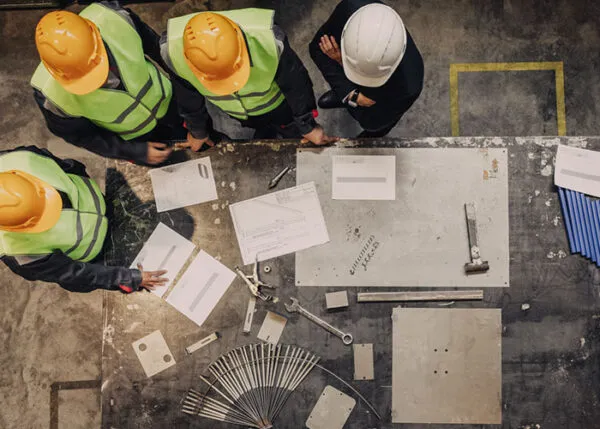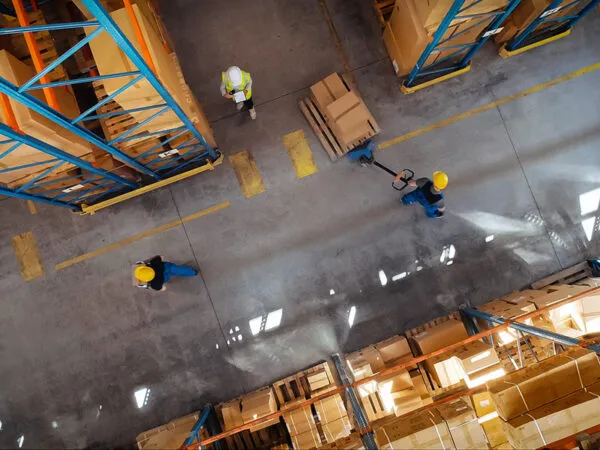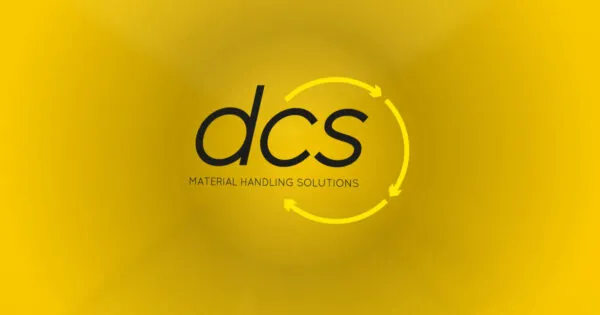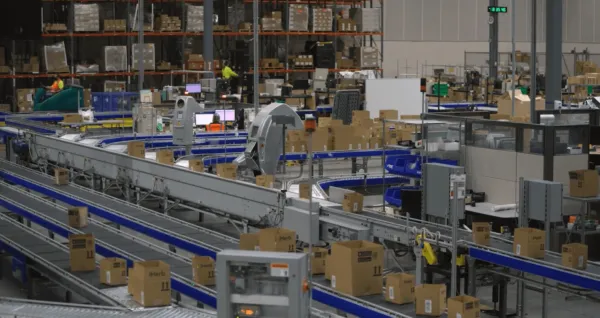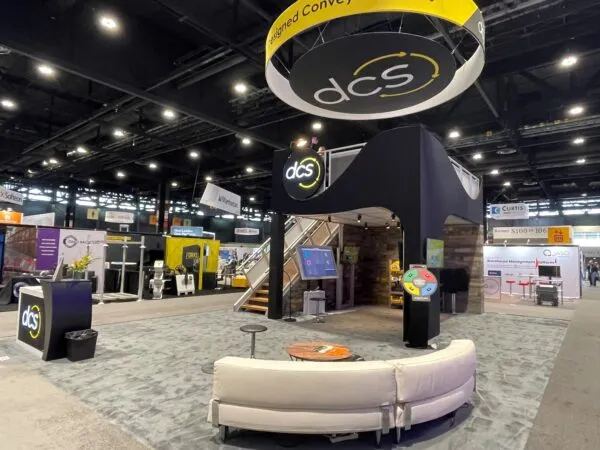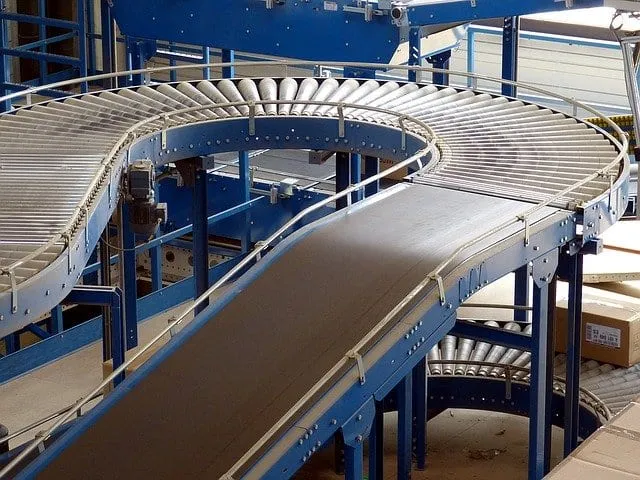With so many different options, it can be hard to know what type of conveyor systems to use in your warehouse automation.
Here are 20 common types of conveyors. If you need help choosing systems for your warehouse, contact DCS.
Belt Conveyor
This is probably what you picture when you think of a conveyor. They are simple devices-a moving belt turned by pulleys-but are very useful. A motor is used to turn the pulleys, thus moving the belt.
Chute Conveyor
Picture a slide for your packages. Chute conveyors are metal slides used to transport packages down to a lower level of your warehouse. They are cheap but using them can increase the odds of packages bumping into each other and getting damaged.
Gravity Roller Conveyor
Instead of a belt, this device uses cylindrical rollers. It is built at a slight decline so parts slide downward on their own.
Powered Roller Conveyor
This is like a gravity roller conveyor except a chain or belt is used to make the rollers turn on their own, so they don’t have to be built on a decline. Sometimes they can even go uphill.
Bucket Conveyor
Grain elevators, which we discussed here, fall under this category. Bucket conveyor systems are used to move material vertically, by scooping it with a series of buckets attached to a belt, chain, or cable. The conveyor moves the buckets upward, scooping up the material, and carrying it to the top before dumping it out.
Ball Transfer Conveyor
Thomasnet.com describes this type of conveyor system: Ball Transfer tables or conveyors use a series of mounted ball casters to allow for unpowered, multi-directional conveyance of the product. Essentially, imagine rows of metal balls on a table that can turn and rotate in any direction. This allows material to be pushed in different directions (as opposed to rollers which can only go forwards and back).
Slat Conveyor
As Ultimation explains, A slat conveyor is basically a two-strand chain conveyor with slats connected to the chain and a guiding system for the slats. This creates a smooth surface to which tooling details or fixtures can be mounted to hold parts in the desired position. Here is a video of one working.
Chain Conveyor
These are exactly what they sound like. Instead of having rollers or a belt, they have moving chains to carry products. They are usually low to the ground and are used to carry larger items. See one working.
Trolley Conveyor
There is a whole family of conveyors that carry their load beneath them instead of on top of them. Sometimes the load is hung from an overhead beam and pushed along. Other times they are motorized. Sometimes, as with the Power-and-Free Conveyor, they have two tracks-one motorized and one not motorized.
Inverted Monorail Conveyor
Turn a trolley conveyor upside down, attach it to the floor instead of the ceiling, and you’ve got an inverted monorail. This rail carries material from underneath.
Magnetic Conveyor
Thomasnet.com states: Magnetic Conveyors use moving magnets mounted beneath stationary plates, tables, or other kinds of non-magnetic slider beds, to move magnetic (ferrous) materials, often in the form of machining scrap.
Vibrating Conveyor
This conveyor vibrates slightly to move bulk material along it. It can be a tube, a flat top, or a trough.
Troughed Belt Conveyor
A belt conveyor with the ends tilted upward forming a u-shape. This makes it less likely material will fall off.
Screw Conveyor
This is a tube with a screw-shaped device inside that turns to move material. It’s also referred to as an auger conveyor.
Tow Conveyor
A tow conveyor is a towline (sometimes a chain in the floor) that drags carts or dollies. They work great for long distances.
There are also other related devices that use a chain to drag items such as a tubular drag conveyor.
Sortation Conveyor Systems
As NC State University explains, Sortation conveyors are used for merging, identifying, inducting, and separating products to be conveyed to specific destinations. They use different methods to sort incoming packages.
Pneumatic/Vacuum Conveyor
These conveyors use a vacuum or air pressure to move material.
Vertical Conveyor
These are like elevators for packages/material. They lift them up to a different level of the warehouse. They are not big enough to lift people, however.
Wheel Conveyor
These are similar to a roller conveyor except with small, individual wheels instead of long, cylindrical rollers.
Walking Beam Conveyor
Walking Beam conveyors move material incrementally along the conveyor using moving and static supports. They are useful if you need material to be in an exact place.
If you need help choosing or designing a conveyor system, let us know. We have over 35 years of experience working on projects large (up to $30 million) and small.
